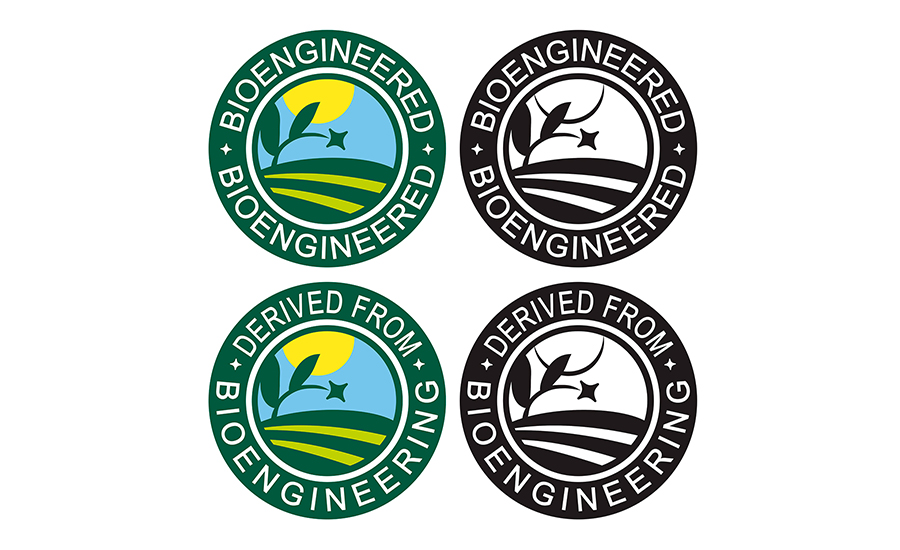Manufacturing News
Are you ready for USDA’s “Bioengineered Food” labeling rule?

USDA’s AMS states that 94% of soy grown in the USA is bioengineered. If genetic material can be consistently found in the final product, the product would have to be marked with a suitable “Bioengineered” label. Photo courtesy of Wayne Labs
With a mandatory compliance date of January 1, 2022, USDA’s Agricultural Marketing Service (AMS) rule, “National Bioengineered Food Disclosure Standard (NFBDS),” requires “food manufacturers, importers and other entities that label foods for retail sale to disclose information about bioengineered (BE) food and BE food ingredients. This rule is intended to provide a mandatory uniform national standard for disclosure of information to consumers about the BE status of foods. Establishment and implementation of the new Standard is required by an amendment to the Agricultural Marketing Act of 1946.”
“When you think about this law, it’s not a true food safety law,” said Eric Edmunds, JD, who recently appeared on SafetyChain’s FSMA Fridays and is director of food safety for The Acheson Group (TAG). “The science has really shown that bioengineered foods are as safe as their conventional counterparts. But, it’s a consumer information law—people want to know if they’re consuming bioengineered food, or what people commonly refer to as GMOs. Any food that is sold at retail that falls into its requirements is going to have to have some sort of disclosure,” Edmunds added.
Any packaged food—whether it’s the person who manufactures or imports it—is subject to the new law, or a retailer who is making products in house or is selling bulk foods that don’t have an outer package will be responsible for labeling the food and making consumers aware whether or not a bioengineered food is being sold or has an ingredient within the food is bioengineered, said Edmunds.
The rule requires foods to bear a disclosure indicating a food is or may be bioengineered. According to the rule, AMS defines “bioengineered food,” as a food that: “contains genetic material that has been modified through in vitro recombinant deoxyribonucleic acid (DNA) techniques;” or “for which the modification could not otherwise be obtained through conventional breeding or found in nature.”
However, if a bioengineered ingredient is used in food products that have been processed, aka refined products, these products do not contain genetically modified materials because the refining process has rendered any genetic material undetectable using common testing methods. Therefore, they would not require a BE label.

According to the NFBDS rule, “Whether a food or food ingredient contains modified genetic material may vary depending on the refining process used to produce the food. For refined foods that are derived from bioengineered crops, no disclosure is required if the food does not contain detectable modified genetic material.”
Foods that are genetically engineered (modified) and directly consumed are subject to the bioengineered label—unless processors can prove there are no BE ingredients in their product. The reason is that several crops/foods use bioengineering or genetic modification, either in the food itself or an ingredient. AMS states, for example, that the use of BE has been highly adopted in canola (90%), field corn (90%), soybeans (94%) and in 100% of sugar beets. Other covered foods are noted later in this article.
Record keeping and testing essential to show non-BE
To comply with NFBDS requirements, processors should maintain records to verify the foods they create have been subjected to refining processes and have been validated to render modified genetic material undetectable. Such records may include customary processing records maintained in the normal course of business, as well as copies of the most recent analytical testing results used to validate the refining process.
Processors can also show that modified genetic material is not detectable by maintaining certificates of analysis or other testing records appropriate to the specific food tested, which confirm the absence of modified genetic material.
However, some processors may want to disclose voluntarily that their processed food was made with ingredients derived from a bioengineered source to provide a mechanism for regulated entities to provide information to consumers. The new rule describes voluntary disclosure in more detail later in the AMS NFBDS rule.
Exemptions from required BE labeling/disclosure
AMS is aware that an ingredient that is required to be listed in the ingredient list in one product may be used in another product as an incidental additive that is not required to be included in the ingredient list. Under this factor or condition, such an item will only trigger disclosure when it is used as an ingredient that is included on the ingredient list, not when used as an incidental additive.
Section 101.100(a)(3)(i), (ii) and (iii) provide a list of incidental additives that are not required to be labeled under FDA regulations and by extension are not required to be disclosed as BE foods. AMS believes that the cross-reference to the FDA regulations is clear.
In addition, the regulation exempts food served in a restaurant or similar retail food establishment from disclosure under the NBFDS. This includes cafeterias, lunch rooms, food stands/trucks, taverns, salad bars, delis, etc.
Some people are not happy with not knowing if restaurant food is bioengineered, said TAG’s Edmunds. “There’s not really going to be a mechanism for the consumer to know whether the restaurants or cafeterias are serving bioengineered food; this will be restricted to the grocery store, packaged foods and things prepared in the grocery store.”
“When you think about this law, it’s not a true food safety law.”
—— Eric Edmunds, JD, director of food safety, The Acheson Group
The NFBDS rule also exempts very small food manufacturers from disclosure requirements. A very small food manufacturer is defined as a processor with annual receipts of less than $2.5 million. To develop this definition, AMS used FDA’s exemptions or special labeling requirements for certain foods offered to consumers by those with annual gross sales of less than $500,000.
The rule also “establishes a threshold for the inadvertent or technically unavoidable presence of bioengineered substances of up to five percent (5%) for each ingredient, with no such allowance for any BE presence that is intentional.” A good example, says TAG’s Edmunds, is the processor who is using a non-bioengineered grain in its product, but sometimes residual traces of bioengineered grain get mixed in at the farm’s harvesting equipment or in transportation vehicles, which is usually unavoidable. In this case, it’s usually less than 5% and certainly is unintentional on the processor’s part.
The current rule prohibits a food derived from an animal being considered a BE food solely because the animal consumed feed purchased from, containing or consisting of a BE substance. For example, eggs used in baked goods, where the eggs come from chickens fed with BE corn and soy, would not be considered bioengineered solely on the basis of the chickens’ feed.
Finally, in the case of food certified under the national organic program established under the Organic Foods Production Act of 1990, the organic certification is enough in itself to make a claim regarding the absence of bioengineering in the food, such as “not bioengineered” or “non-GMO.” Thus, certified organic foods are not subject to BE disclosure.
Mandatory disclosure
AMS has created a list of BE foods and conducts regular reviews to update it. If a food or food ingredient is on the List of Bioengineered Foods, and the food manufacturer’s records show that the food is a bioengineered food or does not indicate whether or not the food is bioengineered, the food must bear a BE disclosure. According to AMS, if a processor is unsure if a food is bioengineered, in terms of public disclosure, it’s appropriate to err on the side of disclosure to provide consumers with the fullest information about food that could be bioengineered.
According to current data, the List of Bioengineered Foods includes alfalfa, apple (Arctic™ varieties), canola, corn, cotton (e.g., cottonseed oil), eggplant (BARI Bt Begun varieties), papaya (ringspot virus-resistant varieties), pineapple (pink flesh), potato, salmon (AquAdvantage®), soybean, squash (summer), and sugarbeet. These foods comprise most of the bioengineered crops or foods grown in the world and, therefore, most of the bioengineered food and food ingredients.
If a processor is using a food, including an ingredient produced from such food, not on the List of Bioengineered Foods, and the manufacturer has actual knowledge that the crop or ingredient is, in fact, bioengineered, the processor is still responsible for labeling the food in compliance with the NBFDS. If a manufacturer uses a food, including an ingredient produced from such food, on the List of Bioengineered Foods and its records demonstrate that the food is not bioengineered (e.g., modified genetic material is not detectable), the food is not required to bear a BE disclosure.
Edmunds also noted there are some foods not grown in the U.S. that would be subject to being listed if they were grown domestically. These include some tomatoes, rice, plums and flaxseeds. As noted above, Edmunds said that if a manufacturer is using an imported ingredient, which it knows to be bioengineered but is not on the USDA/AMS list, that manufacturer is still responsible for indicating the use of a bioengineered product.
The NBFDS allows for disclosure using several means. A text disclosure such as “Bioengineered Food” for raw agricultural commodities or “Contains a bioengineered food ingredient” can be used. A symbol can be used, and should adhere to the graphics shown. Other methods include an electronic or digital link and text message disclosure.
If using an electronic/digital link, the text must say “Scan here for more food information,” but also must be accompanied by a phone number. Note, says Edmunds, the link does not have to say directly that the food is bioengineered, but it must take a person to a landing page that does provide that information. A text message, however must say: “Text [command word] for bioengineered food information.”
For more information
For a detailed look at the NBFDS rule, access it on the Federal Register at https://www.federalregister.gov/documents/2018/12/21/2018-27283/national-bioengineered-food-disclosure-standard.
By the time you read this article, you should be able to watch the SafetyChain/TAG webinar entitled “The National Bioengineered Food Disclosure” at https://safetychain.com/resources/fsma-fridays/.
"BE Frequently Asked Questions,” USDA/AMS Web site: www.ams.usda.gov/rules-regulations/be/faq/general
“New bioengineering labels are on the way,” FE Manufacturing News, Aug. 2018
Looking for a reprint of this article?
From high-res PDFs to custom plaques, order your copy today!






